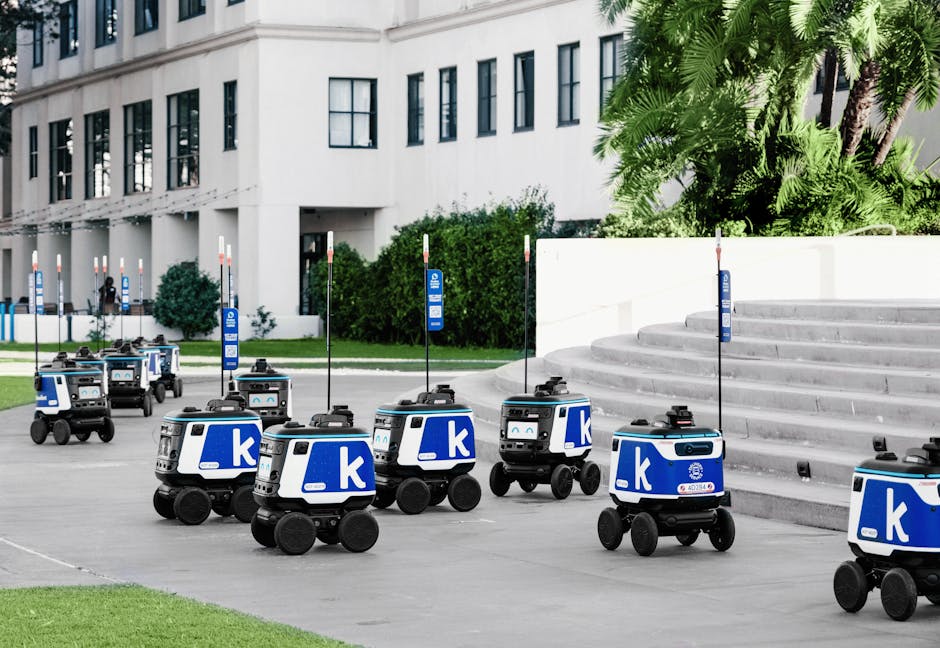How Smart Cities are Shaping the Future of Urban Living
Urban areas around the globe are experiencing rapid transformations as they integrate innovative technologies into daily life. This shift is giving rise to smart cities, where digital solutions enhance the efficiency of services, improve infrastructure, and address sustainability challenges. With urban populations steadily growing, these advancements are not just modern conveniences but essential tools to meet the demands of contemporary living. Smart cities represent a collaborative effort between technology, urban planning, and environmental consciousness, aiming to create spaces that are both livable and future-ready.

The Core Components of Smart Cities
Smart cities rely on a combination of advanced technologies and strategic planning to streamline urban operations. These components work together to create systems that are responsive and efficient.
One critical element is the Internet of Things (IoT), which connects devices and sensors throughout the city to collect and share data. For example, smart traffic systems use IoT devices to monitor real-time traffic conditions, allowing for dynamic adjustments in signal timings to reduce congestion. Additionally, public transportation systems can benefit from IoT by providing live updates on schedules and optimizing routes based on demand.
Another key factor is renewable energy integration. Smart grids powered by solar panels or wind turbines not only reduce dependency on fossil fuels but also ensure a reliable energy supply. These grids can store excess energy and distribute it as needed, balancing supply and demand effectively. Cities such as Amsterdam have adopted smart grid solutions to support their sustainability goals.
Urban mobility solutions also form an integral part of this ecosystem. Electric vehicle (EV) charging stations, ride-sharing platforms, and autonomous vehicles contribute to reducing carbon emissions while enhancing accessibility. For instance, Singapore's smart mobility initiatives include driverless buses and a network of EV charging stations strategically placed across the city.
Enhancing Quality of Life
One of the main objectives of smart cities is to improve the daily lives of their residents by addressing issues like pollution, housing shortages, and resource management.
Air quality monitoring systems are becoming increasingly common in urban areas. These systems provide real-time updates on air pollution levels, enabling citizens to make informed decisions about outdoor activities. Additionally, governments can use this data to implement policies aimed at reducing emissions in high-pollution zones.
Smart housing initiatives play a vital role in addressing urban living challenges. Automated systems for energy conservation, waste management, and water usage not only reduce costs for residents but also promote sustainable practices. In Barcelona, smart water meters have been introduced to monitor consumption and detect leaks promptly.
Public safety is another area where smart technologies have made significant strides. Surveillance cameras equipped with AI capabilities can identify unusual activities or potential threats in crowded areas. Emergency response systems also benefit from these advancements by improving coordination among various agencies during crises.
Sustainability and Environmental Impact
A major focus for smart cities is achieving sustainability by minimizing environmental impact while maximizing resource efficiency. Urban planners are increasingly turning to green technologies and innovative design strategies to achieve these goals.
Energy-efficient buildings form a cornerstone of sustainable urban development. These structures utilize smart heating, cooling, and lighting systems that adapt based on occupancy patterns. Cities like Copenhagen have embraced this approach with buildings designed to consume minimal energy while providing maximum comfort.
Water management systems are equally crucial. Smart irrigation technologies ensure that public parks and gardens receive adequate water without wastage. Furthermore, rainwater harvesting systems integrated into city infrastructure help replenish groundwater reserves.
Waste management has also seen advancements through the use of AI-powered sorting facilities and automated garbage collection services. These solutions streamline recycling efforts and reduce landfill dependency.
| Smart City Feature | Example City | Impact |
|---|---|---|
| Smart Traffic Management | Los Angeles | Reduced congestion by 30% |
| Renewable Energy Grids | Amsterdam | Increased use of clean energy sources |
| AI Surveillance Cameras | London | Enhanced public safety measures |
| Smart Water Meters | Barcelona | Efficient water usage monitoring |
| Electric Vehicle Infrastructure | Singapore | Improved adoption of EVs across the city |
The Role of Collaboration in Building Smart Cities
The transition toward smarter urban environments requires cooperation between governments, private sectors, and local communities. Successful implementation depends on shared goals and collective effort.
Governments play a pivotal role by establishing policies that encourage innovation while safeguarding public interest. For example, tax incentives for companies developing green technologies can accelerate adoption rates. Similarly, regulations promoting data privacy ensure that residents' information remains secure within these interconnected systems.
The private sector contributes through technological advancements and investment in infrastructure projects. Companies specializing in IoT devices or renewable energy solutions often partner with municipalities to deliver tailored services that meet specific needs.
Civic engagement is equally important in shaping successful outcomes for smart cities. Residents must actively participate in discussions about new initiatives or policies affecting their communities. Educational campaigns can raise awareness about how these technologies improve quality of life while addressing concerns related to cost or accessibility.
The interplay between these three stakeholders ensures that smart city projects remain inclusive while catering to diverse interests.
The integration of technology into urban living is more than just a trend; it's a necessary evolution in response to global challenges like climate change, population growth, and resource scarcity. Smart cities demonstrate how innovative thinking combined with collaborative efforts can pave the way for sustainable development without compromising on convenience or safety.
This concept pushes us to consider what lies ahead for our urban environments as we continue adapting them for future generations' needs and perhaps leaves us pondering how we might contribute toward building smarter spaces ourselves.
This article was generated by AI